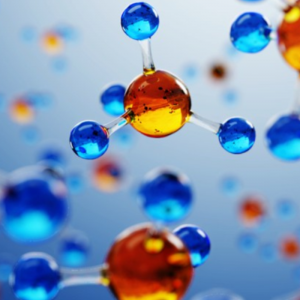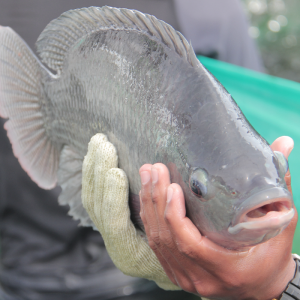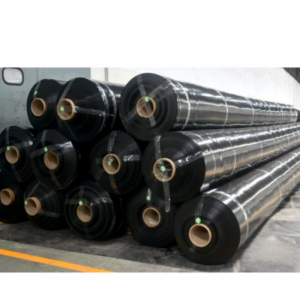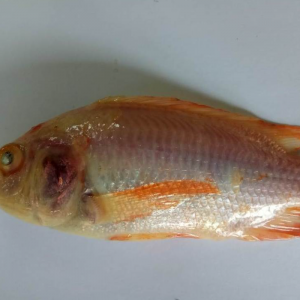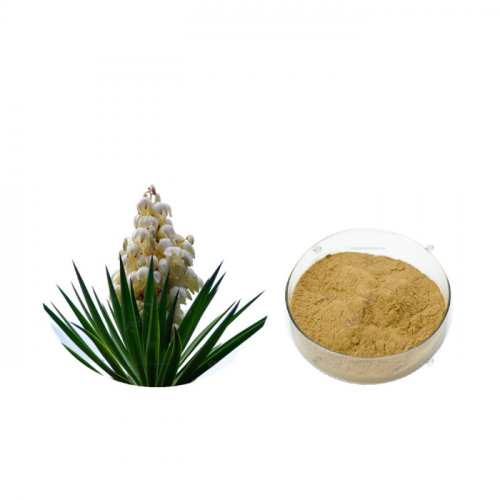
Combining Yucca Extract and Yeast in Tilapia Farming
| Wed, 23 Dec 2020 - 17:52
Improve water quality, tilapia yield with Yucca extract and S. cerevisiae yeast
Tilapia is a freshwater fish that has been growing rapidly recently. Intensive fish farming can adversely affect the yield and health of the fish. Environmental stressors, including intensive ammonia toxicity can cause tissue damage, immunosuppression and oxidative stress, care should be taken in finding ways to minimize these effects. this disadvantage is in fish.
Yucca ( Yucca schidigera ) (is a medicinal plant, has many bioactive ingredients including saponins and polyphenols.These phenolic compounds are responsible for improving the health and performance of fish. Biology is often used to improve the growth, health and immunity of fish and shrimp.For this purpose, the yeast Saccharomyces cerevisiae is used as a probiotic due to its positive effects. for aquatic animals.
Tilapia (28 - 32g) are randomly assigned to 4 treatments: control (DC), NT1: additional 1 g YE / m 3 , NT2: additional 1 g yeast / m 3 and NT3: 1g yeast + YE / m 3 .
Improve water quality
Water quality is the most important factor in achieving optimum fish yield and yield. In this study, neither water temperature nor dissolved oxygen was affected by Y ucca schidigera or yeast supplementation . This may be because the ponds are in the same environmental conditions. On the other hand, the value of pH and NH3 has decreased significantly compared to the pH value when using Yucca schidigera or yeast, so both when adding to the water improve the water quality. NH3 concentration is known to increase as the pH value and water temperature increase. Therefore, decreased NH 3 levels in treatments may be related to reduced pH values.
Yucca schidigera's ability to reduce ammonia levels has been observed in both freshwater and marine fish. Headon and Dawson (1990) suggest that ammonia reduction may be due to the binding of ammonia with a small fraction of Y.schidigera or the conversion of ammonia to nitrite and nitrate.
In addition, the use of yeast in this study had significantly reduced the pH value and NH 3 . This is likely due to enhanced microbial activity leading to higher respiration rates and increased CO2 production. Besides, yeasts can use nitrogen compounds as nutrients leading to a decrease in the concentration of NH 3 in pond water. Furthermore, the addition of yeast to pond water can increase the amount of nitrifying bacteria leading to the conversion of ammonia to nitrite and then to nitrate.
Growth performance
The profitability of fish farming in cement and earthen ponds often depends on water quality and fish yield. In this study, the growth performance of tilapia was significantly improved by the addition of Yucca schidigera or yeast, particularly effective in the combination of yeast and Yucca schidigera . Tilapia is an omnivorous fish that can passively graze on grass and feed on particles suspended in pond water including Yucca schidigera and yeast. Hence, both supplements in water can improve growth, health, immunity and antioxidant responses in this fish. Furthermore, fish in NT used a combination yeast Yucca schidigeraconsume more food (34.6 g / head) than the control group (22.9 g / head). The FCR value (1.37 - 1.41) and the survival rate of fish (98.3 - 100%) were neither affected by treatments supplemented with Yucca schidigera or yeast.
Biochemical parameters
Biochemical parameters are important to assess the nutritional status, health and adaptability of the fish to the external environment. Elevated glucose levels are known to be a fish's overall response to stress, and they correlate with elevated cortisol levels. However, the glucose concentration of tilapia in the current study was not significantly affected by the use of Yucca schidigera or yeast. This suggests that Yucca schidigera and yeast are not stressful for the fish. On the other hand, treatments using Yucca schidigera or yeast increased total serum protein and total lipid in fish and the highest value was in the treatment using a combination of yeast and Yucca schidigera.
Total serum proteins (serum TP) can be classified into two groups: ALB and GLO, which play an important role in the fish's immune response. Serum TP is capable of maintaining an osmotic balance between blood and tissue and is also very sensitive to metal toxicity. The addition of Yucca schidigera or yeast to pond water in this study significantly increased serum TP, ALB and GLO values. These results are likely due to DNA stimulation, ribosome formation and an increase in protein synthesis in liver tissues. Indeed, elevated levels of ALB and GLO are associated with a stronger nonspecific immune response.
AST and ALT are essential enzymes in cellular nitrogen metabolism, amino acid oxidation and hepatic glucose generation, and they can be used as a tool to detect any harmful effects causing damage. liver injury or liver dysfunction. In this study, AST activity was significantly reduced in tilapia when using Yucca schidigera and yeast may be due to the effectiveness of Yucca schidigera and yeast in improving liver health. These findings suggest that both Yucca schidigera and yeast show protective effects on the liver and kidneys.
Index of oxidative stress
SOD, CAT, and GPx are involved in enzyme mechanisms that help reduce oxidative stress in fish. These enzymes can work to maintain a normal balance and improve any redox imbalances in the biological system. In the current study, adding Yucca schidigera or yeast to pond water significantly increased SOD, CAT, and GPx activities in tilapia, demonstrating the strong antioxidant properties of these supplements. Notably, the highest value was found in NT3 using a combination of yeast and Yucca schidigera , followed by Yucca schidigera followed by yeast, the lowest value was observed in the general group.
Overall, this study shows that using 1.0g / L Yucca schidigera in combination with yeast can improve pond water quality by reducing pH and ammonia levels. Furthermore, these additives improve tilapia growth and reduce oxidative stress.













